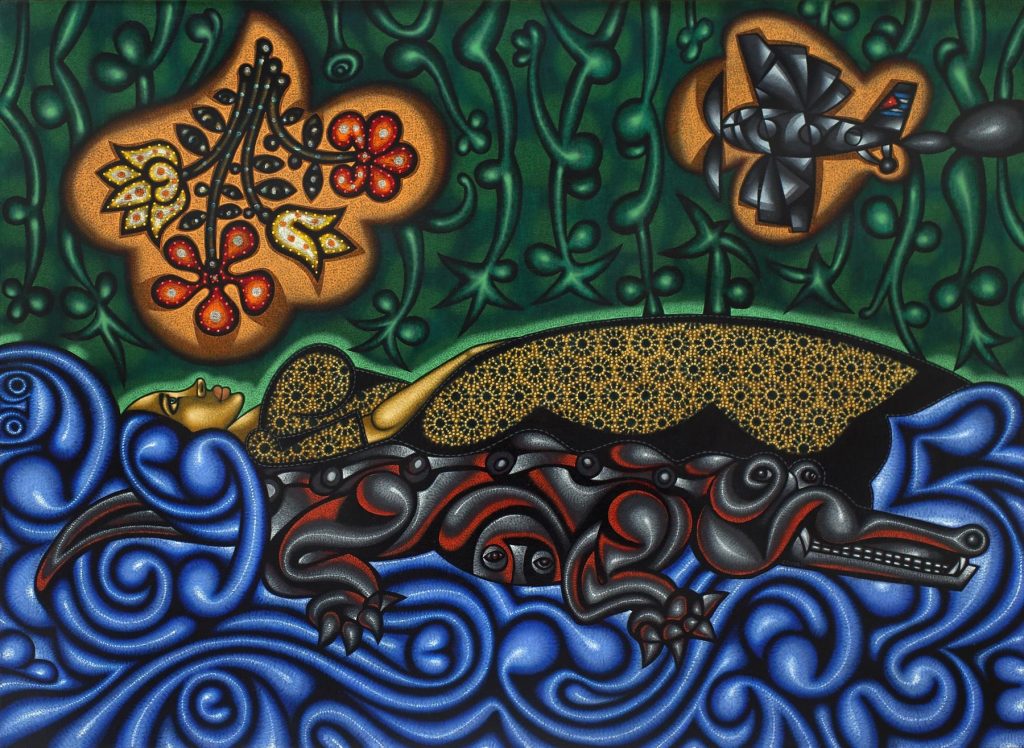Las Flores del Regreso
by Carlos Luna

Oil on Canvas
43 x 59 in
(109 x 150 cm)
2003
Provenance
CCG Art Collection, Miami, Florida, USA.
Exhibited
Complejo Cultural Universitario, Puebla, Mexico, August 18, 2009 –
Museum of Art Fort Lauderdale, Nova Southeastern University, Fort Lauderdale, Florida, USA , October 2, 2008 –
Museum of Latin American Art (MOLAA), Long Beach, California, USA, June 12 –
The Katzen, American University Museum, College of Arts and Sciences, Washington, D.C., USA, January 29 –
Polk Museum of Art, Lakeland, Florida, USA, August 24 –
Susquehanna Art Museum, Harrisburg, Pennsylvania, USA, January 11 –
Literature
Carlos Luna, Personal Histories, Susquehanna Art Museum, Polk Museum of Art & The Suzanne H. Arnold Gallery, Lebanon Valley College, p. 29, Published July 2006, Illustrated in color.
Carlos Luna, El Gran Mambo, American University Museum, Museum of Latin American Art (MOLAA), p. 33, Published 2008.
Pablo Picasso Ceramics, Carlos Luna Paintings, p. 235 (Cat. 95), Published 2008, ISBN: 978-
Museum Description
Carlos Luna
Las flores del regreso
The stylistic and technical characteristics of Luna’s work include heavy outlines, highly abstracted forms, and a dense patterning that is also reminiscent of colonial painting from Mexico and the Andes. Drapery is especially similar, with its brocade details and stenciled effect – actually done by the artist in a relief technique that is as tactile physically as visually. The tiny dots that outline many of his designs are dabs of opaque paint, meticulously applied with the same obsessive attention to detail that characterizes all his work and is typical of his work ethic. These details give a kind of baroque aesthetic to his surfaces, filled with tiny brushstrokes and a multitude of painterly elements. Cuban art has long been associated with this tendency to fill the canvas, as the houses were filled with lace cloths, stained glass windows, iron ornamentation, and quantities of small decorations. A profusion of flowers, tropical fruits, and gardens overflowing with dense vegetation was the inspiration for generations of Cuban painters.

